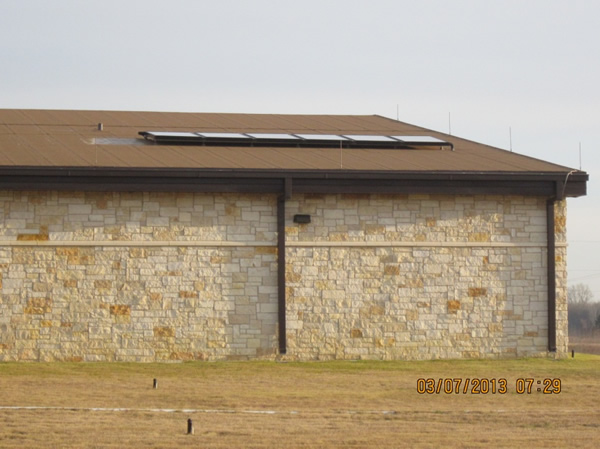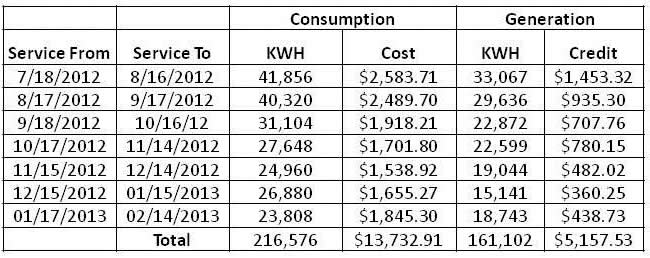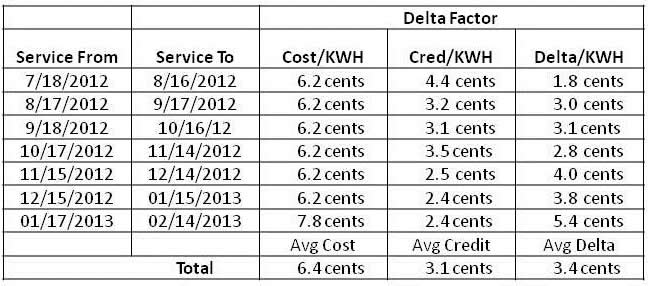By reducing energy consumption through the use of geothermal and solar water heaters while generating energy from renewable sources, the 63D RSC is positioning itself to meet the three percent annually energy reduction goal while creating renewable energy generation projects for the Army Reserve.
63D RSC Lessons Learned in Energy Efficiency
Colonel Stewart R. Fearon | 63rd Region Support Command, US Army Reserve
In an effort to improve energy efficiency and reduce greenhouse gas emissions, the 63D Regional Support Command (RSC) used the Bryan U.S. Army Reserve Center, home of the 420th Engineer Command, as a test bed for a Geothermal Heat Pump, solar water heating and a Photovoltaic (PV) Solar Array. The goal was to implement Presidential Executive Order 13423 to reduce energy intensity by three percent annually and implement renewable energy generation projects on Army Reserve property.
 The Geothermal Heat Pump was the first of its kind installed in a 63D RSC Army Reserve Center. Basically eighty three (83) 300-foot deep wells were drilled to feed 37 heat pumps. This completely replaced the chiller unit.
The Geothermal Heat Pump was the first of its kind installed in a 63D RSC Army Reserve Center. Basically eighty three (83) 300-foot deep wells were drilled to feed 37 heat pumps. This completely replaced the chiller unit.
In Bryan Texas, comparatively little energy is expended on heating the building so cooling is the primary driver for the Heating Ventilation Air Conditioning (HVAC) system. Compared to a typical chiller unit, the initial cost and annual maintenance of the Geothermal Heat Pump are more expensive, but over a 25 year life cycle cost, the energy savings make the Geothermal system less expensive while complying with EO 13423.
The Geothermal Heat Pump works for both cooling and heating the Bryan US Army Reserve Center. The ground temperature in Bryan, TX remains relatively constant year round with an average temperature of about 68 degrees Fahrenheit. The Geothermal Heat Pump uses the 300-foot deep wells to extract heat from the ground in the cooler months and distribute it through the conventional duct system to warm the center. In the warmer months the process is reversed and the heat is extracted from the Center and transferred back into the 83 wells. Two pumps located in the mechanical room circulate a Glycol solution through a closed system. Eighty of the wells support the main training/admin building and the remaining three support the Base Maintenance Activity Shop.
Geothermal heating and cooling is a mature technology and has been used for decades. The components are not high tech and do not require extensive maintenance. The expected life span of the Bryan, TX Geothermal Heat Pump is 30 years with periodic maintenance of the pumps, heating and cooling coils.

The diagram above from Water Furnace (http://www.waterfurnace.com/how-it-works.aspx) shows how the process works.
The Bryan U.S. Army Reserve Center project also makes use of solar water heaters. This is also not new technology and is used extensively in home and businesses in temperate climates with high sun exposure. Instead of heating the water from about 68 degrees Fahrenheit to 125 degrees Fahrenheit with gas or electricity, the solar water heaters use the solar panels on the roof to heat the water. On a summer day, the sun will heat the water to the point where additional heating is not required.

Small pumps continuously circulate the hot water from the collector to storage tanks. When the sun goes down or is not shining, the pumps stop preventing the water from circulating back into the collectors and cooling the stored water. In the winter months, when temperature can drop below freezing, sensors signal the pumps to drain the solar panels to prevent them from freezing.
There are two types of active solar water heating systems, direct and indirect. The difference is that in a direct system the water being used runs through the collector and in an indirect system the water or fluid running through the collector only heats the water in the storage tank. The indirect system requires a heat exchanger and requires more piping than shown in the diagram above. The Bryan Reserve Center has two 119 gallon solar water heaters for domestic water in the main training/administrative building and one for the Base Maintenance Activity shop with an electrical backup for those days when the sun does not shine or it is below freezing outside.

The Photovoltaic Solar Array at Bryan covers 14,220 square feet and is made up of 682 (77”x30”) solar panels for an initial cost of $1.48 million. Each panel is capable of generating 280 watts and has a maximum power of 190.9 Kilowatts, but the inverters can only capture 175 Kilowatts. Part of the negotiation between the Army Corps of Engineers and Bryan Texas utilities resulted in 50% of the Renewable Energy Credits going to BTU.

Because the Photovoltaic Array is rated at more than 100 KWs, Bryan Texas utilities does not allow net metering of the system. Instead the 63D RSC sells the power to Bryan Texas utilities based on the current Grid Pricing schedule, which fluctuates and is tied to the seasonal demands for the region. Then the power is purchased back from the power company at the normal rate. Table 1.0 shows the Bryan Army Reserve power consumption and the power generated by the PV Array.

Table 1.0
As you can see, the power output of the Photovoltaic Array steadily declines as the days grow shorter from a high of 33,067 kilowatt hours in July/August to only 18,743 Kilowatts hours in January/February. This was not unexpected. The surprise was the energy credits per Kilowatt hour decreased from 4.4 cents in July down to 2.34 cents in January while the cost of electricity actually increased from 6.2 cents to 7.75 cents.

Table 1.1
If the actual energy credits from the first six months are mirrored by the next six months, the Photovoltaic Array will pay for itself in 143 years. That does not take into account increasing energy costs, energy credits or the benefit to the environment.
The requirement to sell the power to Bryan Texas utilities could be avoided by adding on site energy storage for the power generated by the Photovoltaic Array. This would allow the 63D RSC to use 100 percent of the energy generated instead of selling it to Bryan Texas utilities and then purchasing it back at a higher rate. That would reduce the payback period to 73 years based on an average cost of 6.32 cents per kilowatt hour.
Power storage combined with the Photovoltaic Array will also allow the 420th Engineer Command to continue to command and control its engineer units during a natural or manmade disaster even in the event of a power outage. This will be an invaluable capability in the Defense Support to Civil Authorities (DSCA) mission, which allows for reserve forces to be called up to assist the community in disaster relief efforts.
The 63D Regional Support Command (RSC) is leading the way in implementing Executive Order 13423. By reducing energy consumption through the use of geothermal and solar water heaters while generating energy from renewable sources, the 63D RSC is positioning itself to meet the three percent annually energy reduction goal while creating renewable energy generation projects for the Army Reserve.
Colonel Fearon serves as the Director of Public Works at the 63rd Regional Support Command. He holds a master’s degree in Strategic Studies from the U.S. Army War College, an MBA from National University and a Bachelor’s of Science in Mechanical Engineering from the United States Military Academy.
The content & opinions in this article are the author’s and do not necessarily represent the views of AltEnergyMag
Comments (0)
This post does not have any comments. Be the first to leave a comment below.
Featured Product

